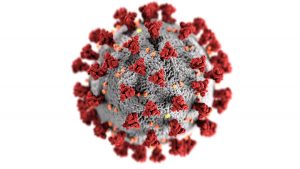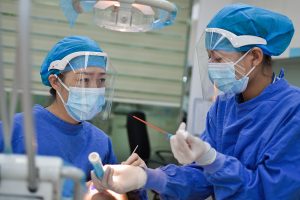Palmetto Hospital Trust is a self-insured workers’ compensation Trust made up of healthcare entities in the state of South Carolina. Each year we look back at the trends impacting the members of the Trust with the goal of identifying areas of focus and opportunity. This year, the Trust was heavily impacted by the COVID-19 pandemic, both directly – through the reporting of occupational related exposures – and indirectly – by taking the focus off other employee safety and claims management programs.
Overall, when comparing the 2020 claims rate (number of claims per 100 full time employees), the Trust experienced a 45% increase from 2019 and a nearly 60% increase from the previous 5-year average (2015-2019). However, when we remove the COVID-19 exposure claims from this calculation, we see a 12% decrease from 2019 and a 4% decrease from the 5-year average. While this is positive overall, we have seen increases in specific causes of claims that encouraged us to dig deeper.
Three-Year Cause Break Down (2018-2020)
Exposure to Non Bloodborne Disease (majority COVID related)
This cause does not normally make our top 5, but due to the pandemic, it rose sharply in 2020. For the three-year period, exposure to non-bloodborne disease account for 9% of the gross incurred costs and 19% of the number of claims.
Slips/Trips/Falls
Both the claims rate and OSHA recordable rate has risen steadily rise since 2018. For this period, slips/trips/falls claims account for 29% of the gross incurred costs and 18% of the number of claims. The most frequent and most severe types are slips on wet surfaces, trips on uneven surfaces/stairs, trips over objects, cords, chairs, and equipment.
Patient Handling
Both the claims rate and OSHA recordable rate has risen slightly since 2018. For this period, patient handling related claims account for 15% of the gross incurred costs and 12% of the number of claims. The most frequent and most severe types are repositioning (up in bed or side-to-side), lateral transfers, and catching/lowering a falling patient.
Workplace Violence
Both the claims rate and OSHA recordable rate has risen slightly since 2018. For this period, struck-hit-injured by a person claims account for 10% of gross incurred costs and 7% of the number of claims.
Needlestick & Sharps
Both the claims rate and OSHA recordable rate decreased slightly in 2020. For this period, needlestick & sharp claims account for less than 1% of gross incurred costs and 3% of the number of claims. Most of our needlesticks & sharps do not become claims but remain as OSHA recordables only.
OSHA Rate Comparison (2018 & 2019)
The Trust members continue to perform at least 20% better than their peers in SC and at the National level when comparing the Total Case Incident Rates (TCIR) and Days Away Restricted and Transferred rates (DART).
Employee Safety Program Management
While everyone’s focus was on how to respond to the COVID-19 pandemic (and rightly so), several of our member employee safety programs struggled. There were a handful of members who valiantly trudged on during it all, and we applaud you for those efforts.
Outlook
But for COVID-19, the overall news for the Trust would be extremely positive. Now that some of the COVID constraints are loosening we are hopeful that we can support the members in refocusing some efforts on other employee safety programs and begin making an impact in those areas.








